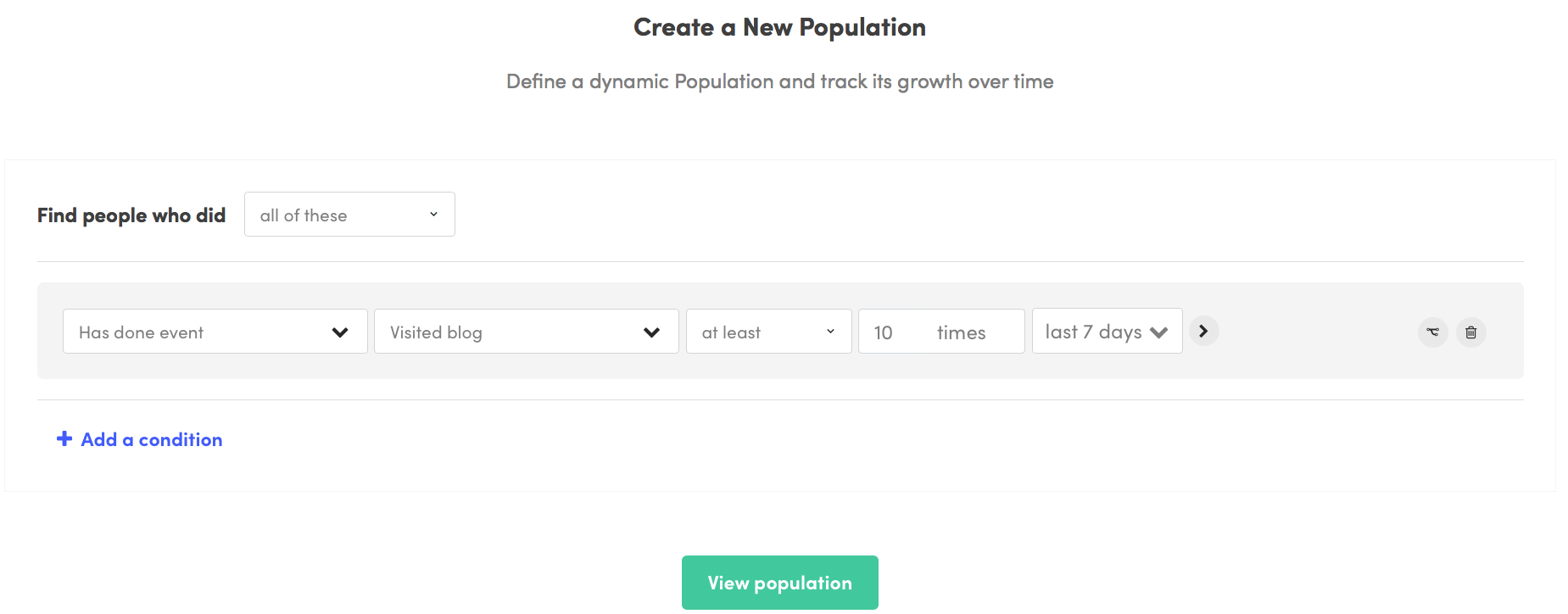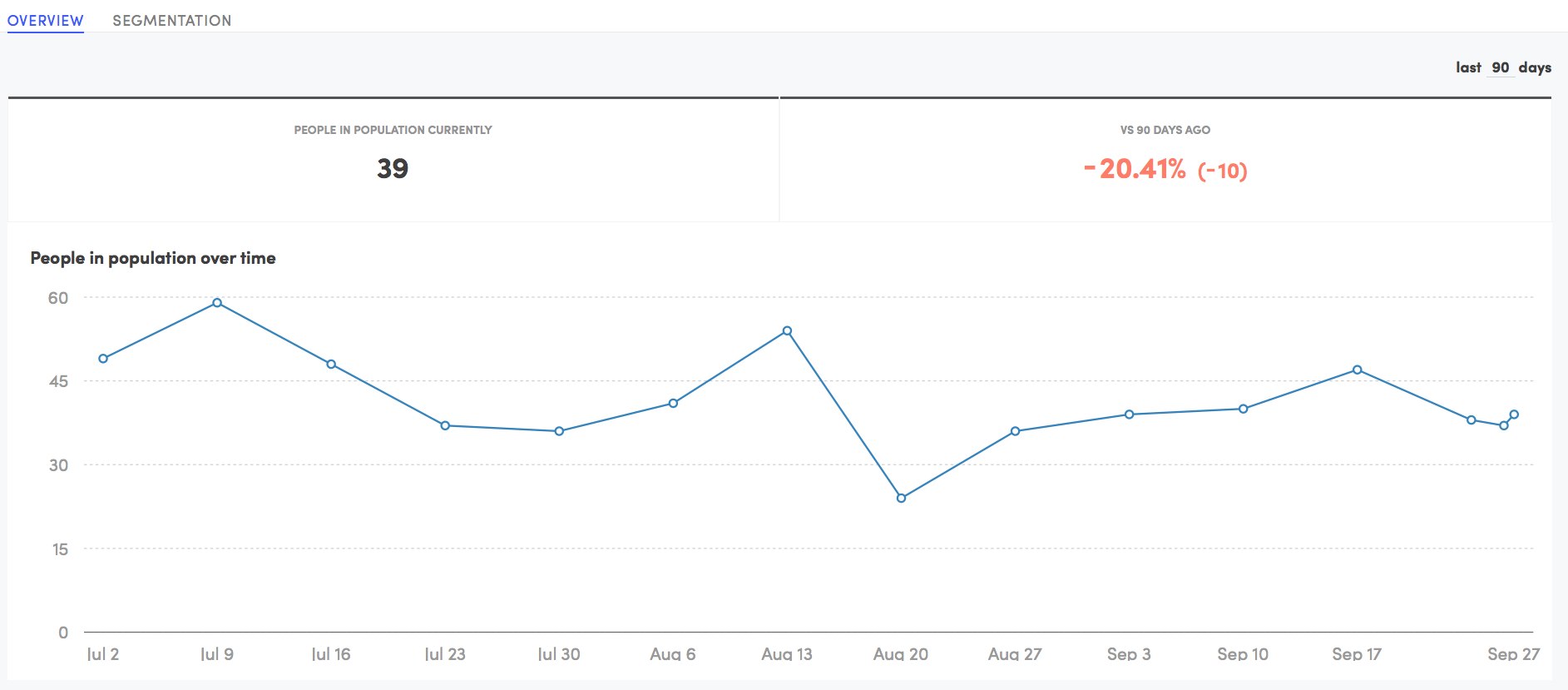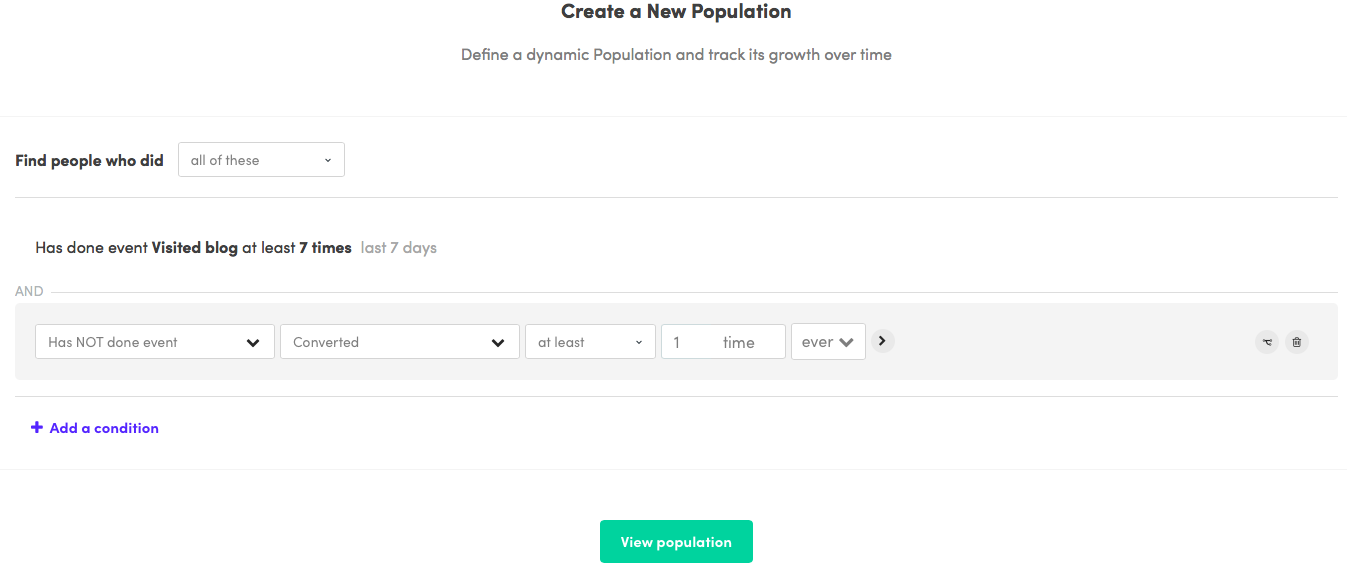While surfing the internet I came accross an outstanding write-up from Semrush that I would love to share with you. The title of the post is 3 Kissmetrics Populations Content Marketers Can Use to Measure Marketing and Retention If you like this report then you can visit the original article using the link to the bottom of this page. Ok so lets begin
Content is basically infinite. Run a Google search for a/b testing and you can spend the rest of your life reading about it.
So in this proliferation of content, it’s retention, attention, and engagement that are key for content marketers. It’s our goal to get visitors to our content, ideally more than once, and eventually get them to convert in some way.
Converting usually starts at the very top of the funnel, by giving eBooks, webinars, email courses, newsletters, content upgrades, etc. Then they’ll be put through a drip campaign to eventually, hopefully, signup or request a demo.
Before we begin, it’s important to be aware of what Kissmetrics Population is, what it does, and who it’s for. This video will explain it:
Now, let’s get into some Populations Content Marketers can set up.
1. Reader Retention
You probably have about 10 websites you visit regularly. Most of them you visit daily, but some others you’ll visit every other day.
I regularly visit Axios, ESPN, the Kissmetrics Blog (of course), New York Times, Drudge Report, Twitter, and ScienceDaily. I’m an engaged visitor on these sites because I visit them regularly. The publishers love a visitor like me because I am traffic, pageviews, and ad dollars for them. And most of all, they get a piece of my attention everyday.
Wouldn’t you love it if your blog was on someone’s “top 10” list? They read your blog posts, download your eBooks, and you’ve become a trusted source for them. Some may call you a “thought leader” (as much as I dislike that term).
Most marketers use cohort reports to measure retention. These reports group people together based on similar attributes and then track their behavior overtime. This can uncover some useful data. There are also “engagement” metrics that can be measured by any actions a reader may take – reading a post, commenting, sharing it on social networks. These can be easily measured with a simple funnel report.
But what about simply tracking the number of people that have visited your blog at least x times during the last week, and then have a graph to see if it’s going up, down, or holding steady?
Populations will do exactly that. You’ll set your conditions (what people have to do enter the Population) and view the graph.
In our case, we’ll set our criteria to people who have visited the blog at least 10x in the last 7 days:

We’ll click View population and get our data:

At the top, we see that there are currently 187 people in our Population. The graph provides us with a week-by-week performance overview. This Population has improved modestly, up about 2% from 90 days ago. It’s ultimately held steady over the last 90 days, staying in the 150-200 range.
What’s important here is to view this in context. Let’s say you have 10,000 monthly readers and your Population holds steady at 1,000. In this case, you know that about 10% of readers are engaged with your content. But if you have 1,000,000 monthly readers, than that 1k Population is less impressive and may signal that you need to create more engaging content that people want to read and consistently check to see what you’ve published.
2. Signups & Conversions
At the end of the day what we want are signups or some form of conversion. A blog that gets 5 million visitors a month but doesn’t convert is about as good as not having a blog at all.
We’re graded not just on traffic, nor on reader engagement, but on how effective our content is at bringing quality leads to our sales teams. HiPPOs care most about this and it’s our job to produce relevant content that brings our target audience in, and then converts them.
You may already be tracking your conversion rate with our Metrics feature, but it’s also useful to use Populations to get an idea of the amount of people that are moving from reader to converter.
Now, the question is what a “converter” is. Each team will differ. Some marketers want an email address so they can convert this reader into an opportunity through a drip campaign. Others will qualify a free trial request as a conversion. E-commerce companies may having adding an item to the cart or purchasing as their conversion.
Regardless of what you’ll count as a conversion, it’s easy to track it in Kissmetrics and Populations.

You’ll notice that in this configuration, we’re looking for the people who visited the blog and then signed up. They cannot visit our marketing site, sign up, and visit our blog because they need to visit the blog before signing up. If they visited the marketing site, the blog, and then signed up, they’ll be included in this Population.

Not good. It’s down 20% from where it was 90 days ago. We need to figure out why this happened.
In some cases, this can be caused by a/b tests that caused a drop in conversions. In other cases a traffic dip will cause conversions to drop. (As long as the conversion rate percentage holds steady). We’ll need to look at our traffic to see if there was a dip that would correlate with this Population drop. If not, we’ll have to dig deeper to see what could be causing it.
3. Visited Blog x Times But Haven’t Converted
Engaged readers are great, but if we’re not converting them to our content upgrades, webinars, eBooks, or even signing up, then we’re not doing a good job marketing our content (or product).
This Population tracks the number of people that visit your blog many times each week, but never convert. It’s simple to set up, just enter your criteria as “people who visited blog at least x times in the last 7 days and have not converted.”

This will do exactly as it says – track how many people are visiting the blog regularly without converting. We can expect this Population to go up with traffic increases, but if it shows a trendline above overall traffic, that might indicate that we’re not converting our readership.
Let’s view our Population:

Wrapping it up
If you would like to see more short articles on search engine optimization then really feel complimentary to surf our various other short articles. We have numerous even more curated articles from semrush and also I wish you enjoy reviewing them.
Comments are closed